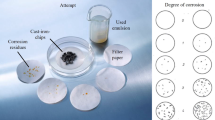Abstract
Machine lubrication systems are a very important portion of manufacturing and production workshop maintenance. Automatic lubrication systems eliminate the need for often careless manual lubrication, providing a safer, more frequent, and opportune monitored approach to machine lubrication. However, traditional automated lubrication systems have inherent environmental and technical–economic problems. With the goal of higher machining precision, cost-effectiveness, greater reduction in oil consumption, and more flexible performance, an automated lubrication control system is introduced in this research work. The new automated lubrication control system in computer numerical control machine tool guideways is a novel approach in machining technology; failure detection/correction in the lubrication system may be identified by temperature signals from sensitive temperature sensors installed in the machine tool guideways, with the signals reflecting the friction, wear, and loading conditions. Data collected via temperature sensors, data analysis, and preparation of commanding signals are analyzed by a lubrication control unit (LCU). The LCU transmits signals to actuators to trigger oil injection by the oil pump. The display unit presents real-time measured temperature variations along with the pump's operation state.
Similar content being viewed by others
References
Altintas Y, Ber A (2001) Manufacturing automation: metal cutting mechanics, machine tool vibrations, and CNC design. Appl Mech Rev 54:84
Yun WS, Kim SK, Cho DW (1999) Thermal error analysis for a CNC lathe feed drive system. Int J Mach Tools Manuf 39:1087–1101
Ramesh R, Mannan M, Poo A (2000) Error compensation in machine tools—a review: part II: thermal errors. Int J Mach Tools Manuf 40:1257–1284
Ribeiro L, Barata J (2011) Re-thinking diagnosis for future automation systems: an analysis of current diagnostic practices and their applicability in emerging IT based production paradigms. Comput Ind 62:639–659
Schwenke H, Knapp W, Haitjema H, Weckenmann A, Schmitt R, Delbressine F (2008) Geometric error measurement and compensation of machines—an update. CIRP Ann Manuf Technol 57:660–675
Liu K, Melkote SN (2007) Finite element analysis of the influence of tool edge radius on size effect in orthogonal micro-cutting process. Int J Mech Sci 49:650–660
Yeh SS, Tsai ZH, Hsu PL (2009) Applications of integrated motion controllers for precise CNC machines. Int J Adv Manuf Technol 44:906–920
Lim H, Seo JW, Choi CH (2001) Torsional displacement compensation in position control for machining centers. Control Eng Pract 9:79–87
Yao B, Al-Majed M, Tomizuka M (1997) High-performance robust motion control of machine tools: an adaptive robust control approach and comparative experiments. Mechatronics IEEE/ASME Trans 2:63–76
Altintas Y, Erkorkmaz K, Zhu WH (2000) Sliding mode controller design for high speed feed drives. CIRP Ann Manuf Technol 49:265–270
Tung E, Tomizuka M, Urushisaki Y (1996) High-speed end milling using a feedforward control architecture. J Manuf Sci Eng 118:178
Tung E, Anwar G, Tomizuka M (1993) Low velocity friction compensation and feedforward solution based on repetitive control. J Dyn Syst Meas Control 115:279
Persianoff R, Ray P, Vidal O (2003) Comparison between an experimental study and a numerical model of the dynamic behaviour of machine-tool slideways. Proc Inst Mech Eng Part B J Eng Manuf 217:1111–1115
Kato S, Yamaguchi K, Matsubayashi T (1974) Stick–slip motion of machine tool slideway. ASME J Eng Ind 96:557–566
Pateloup V, Duc E, Ray P (2010) Bspline approximation of circle arc and straight line for pocket machining. Comput Aided Des 42:817–827
Armstrong-Helouvry B (1993) Stick slip and control in low-speed motion. Autom Control IEEE Trans 38:1483–1496
Hsiao Y,Tarng Y. (2009) Study of the lubrication oil consumption prediction of linear motion guide through the grey theory and the neural network. WSEAS Trans Appl Theor Mech, pp. 42–51
Anderson J, Wiseman SB, Moustafa A, El-Din MG, Liber K, Giesy JP (2012) Effects of exposure to oil sands process-affected water from experimental reclamation ponds on Chironomus dilutus. Water Res 46:1662–1672
Nikolakopoulos PG, Papadopoulos CA (2008) A study of friction in worn misaligned journal bearings under severe hydrodynamic lubrication. Tribol Int 41:461–472
Sparham M, Hamdi M, Rahbari RG, Mahmoodian R (2012) Smart lubrication via pump response interval (PRI) variation in the machining process. Int J Adv Manuf Technol 67(5-8):1755–1764
Yukeng H, Darong C, Linqing Z (1985) Effect of surface topography of scraped machine tool guideways on their tribological behaviour. Tribol Int 18:125–129
Benhabib B (2003) Manufacturing: design, production, automation and integration, vol. 63. CRC, Boca Raton
Jywe W-Y, Chen C-J (2005) The development of a high-speed spindle measurement system using a laser diode and a quadrants sensor. Int J Mach Tools Manuf 45:1162–1170
Bushuev V, Molodtsov V (2010) Role of the machine tool's kinematic structure in ensuring machining precision. Russ Eng Res 30:1053–1059
Desforges X, Habbadi A, Archimède B (2011) Design methodology for smart actuator services for machine tool and machining control and monitoring. Robot Comput Integr Manuf 27:963–976
Author information
Authors and Affiliations
Corresponding author
Rights and permissions
About this article
Cite this article
Sparham, M., Sarhan, A.A.D., Mardi, N.A. et al. Designing and manufacturing an automated lubrication control system in CNC machine tool guideways for more precise machining and less oil consumption. Int J Adv Manuf Technol 70, 1081–1090 (2014). https://doi.org/10.1007/s00170-013-5325-y
Received:
Accepted:
Published:
Issue Date:
DOI: https://doi.org/10.1007/s00170-013-5325-y




